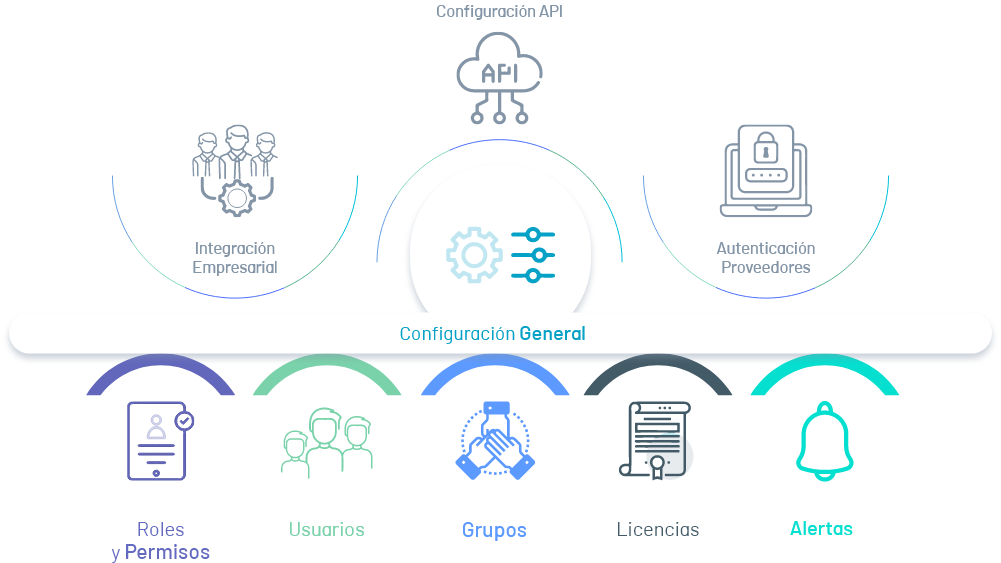The general administrator from the ADM Web console will be able to perform the following traversal configuration tasks:

1. Roles and permissions
In this section, you can define the set of permissions that a user can have to use the ADM console. Roles can be configured according to the organization’s needs.
For more information, see the Role and Permission ↪ Settings.
2. Users
In this module of Aranda Common you will be able to configure the users in charge of asset management in ADM and assign the associated groups and roles that are synchronized with the business directory.
For more information, see the User Management ↪.
3. Groups
In this section you will be able to create and view the groups (manually created or imported from the active directory) that will be used in the different functionalities of the tool. In addition to configuring the mandatory power group (location group) to create the energy usage policies.
For more information, see the User Group Configuration ↪.
4. Licenses
ADM allows you to manage the licenses acquired and associate them with the devices required to carry out proper asset management on the different devices.
For more information, see the License Configuration ↪.
5. Alerts
In this section, you can configure notifications about specific events, as well as modify existing alerts.
For more information, see the Alert Settings ↪.
6. Enterprise Integration
In this section you can configure different integration items such as: The proxy server for communication between workstations or the connection with the Aranda CMDB server. You will also be able to access the configuration of the Common modules such as: The Mail Server for ADM operation or the Directory Services used by ADM such as the LDAP Lightweight Directory Access Protocol and Azure Active Directory.
For more information, see the Enterprise Integration in ADM ↪.
7. Integration Tokens
In this module of Aranda Common you will be able to develop and integrate ADM software with other software applications.
For more information, see the Integration ↪ Token Management.
8. Authentication Providers
In this module of Aranda Common you will be able to define the external authentication providers, which follow the SAML (Security Assertion Markup Language) standard to perform user authentication in the application and subsequent notification about the validation status.
For more information, see the Authentication Provider ↪ Management.


